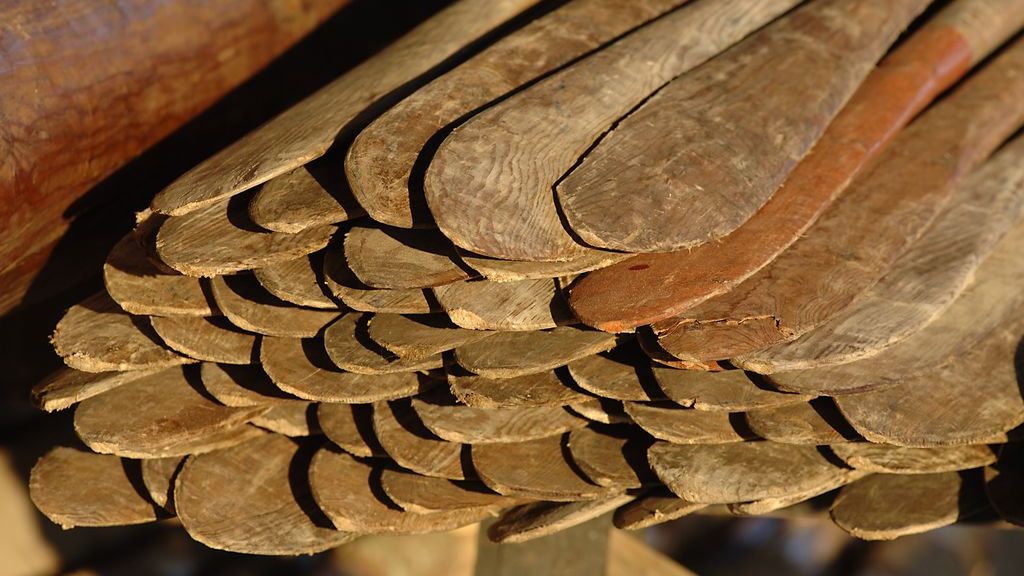Iron is probably not the first material that springs to mind when you think of Viking Age boatbuilding.
However, the clinker-built boats and ships of that era were held together using both wooden and iron nails, making the blacksmith’s craft an essential part of the boatbuilding process.
Many finds of rivets and roves - very little knowledge
And yet despite this importance – and the relatively sizeable quantities of rivets, roves and spikes found during excavation – iron ship fastenings have been largely overlooked within the wider field of archaeological scholarship.
Various typologies have been proposed and attempts have been made at reaching a consensus in terms of a descriptive terminology. Beyond documentation of size, shape and form, however, little attention has been paid to the iron itself or to its exact metallurgical composition.
Iron ore from bogs and wetlands
Most scholars would, however, agree that the bulk of the iron in use in Viking Age Denmark was produced from bog ore – natural deposits of iron ore found in wetland contexts, which are then roasted, smelted and forged into various different objects.
Modern iron in old technology
The majority of Viking ship reconstructions – including our six Skuldelev Ship reconstructions – have been fastened using rivets and roves made from modern, industrially-produced iron, primarily Siemens-Martin steel or ARMCO iron.
The choice of material was made over thirty years ago with the construction of Roar Ege, the first of the Skuldelev ships to be reconstructed. At the time, very few ship’s nails had been analysed and the assumption was that Viking Age boatbuilders would no doubt have gone after the best materials they could acquire when building their ships and the decision was therefore made to use a very pure form of iron with low carbon content. Out of the industrially produced iron available at the time, ARMCO was the product that was the closest match for what was then known about the metallurgical content of archaeological nails.
A choice with major consequences
This choice has had serious consequences for the longevity of our sailing reconstructions. Pure iron has proved itself highly susceptible to rust in maritime contexts and it takes a heavy toll on the wooden hulls.
The rivets expand as they rust, leading to cracks in the planking of the ships. These cracked planks, and the rivets that caused the damage, must be regularly repaired and replaced.
A ship retires
In 2016, the decision was made to halt this cycle of replacement and repair of Roar Ege, the eldest of our Skuldelev ship reconstructions.
By then, so much of the planking and other internal components had been already replaced, that to carry out further repair would have been to break with the principles of archaeological experiment.
Simply put, the Vikings would more than likely have scrapped the ship and built a new one. So, after 32 years of active service, Roar Ege was retired on land.
Experimental archaeological reconstruction
As a Museum working with experimental archaeological reconstruction, our first priority must always be to use materials that mirror those used in the original archaeological finds.
Our experience with Roar Ege had demonstrated that it was the iron, and not the wood, which proved to be the weak point in the hull.
This realisation also emphasised a gap in our understanding of Viking Age maritime technology. We now know that pure iron of the sort used to date in our reconstructions bears little relation to the type of iron used in the Viking Age.
A new experiment will provide answers
But what exactly was Viking Age iron like? And how would it perform in a maritime context?
These are the questions we now need to focus on in terms of experimental archaeological research. To that end, the Museum is currently developing a research programme, which will involve:
- An examination of the archaeological evidence for Viking Age rivets and roves
- Production of iron from bog ore, which will then be used to make rivets and roves
- Use of bog iron rivets and roves in future reconstruction projects. These fastenings will then be monitored over time in order to see how they compare with modern iron in terms of corrosion and decay.
A big decision
Until such a programme of research can be carried out, we’ve made the decision to fasten our current building project – a new reconstruction of Skuldelev 3 – using copper rivets and roves and not rivets and roves made of modern iron.
Even though copper nails weren’t used in the Viking Age, but the advantage of using copper nails is that they will not, in the same way as modern iron, cracks in the planking of the ship and shorten the life of the ship. Using copper will reduce the need for maintenance and repair, acknowledging the fact that the number of suitable oaks for boatbuilding is dwindling and ensuring that we don’t waste this valuable resource.











